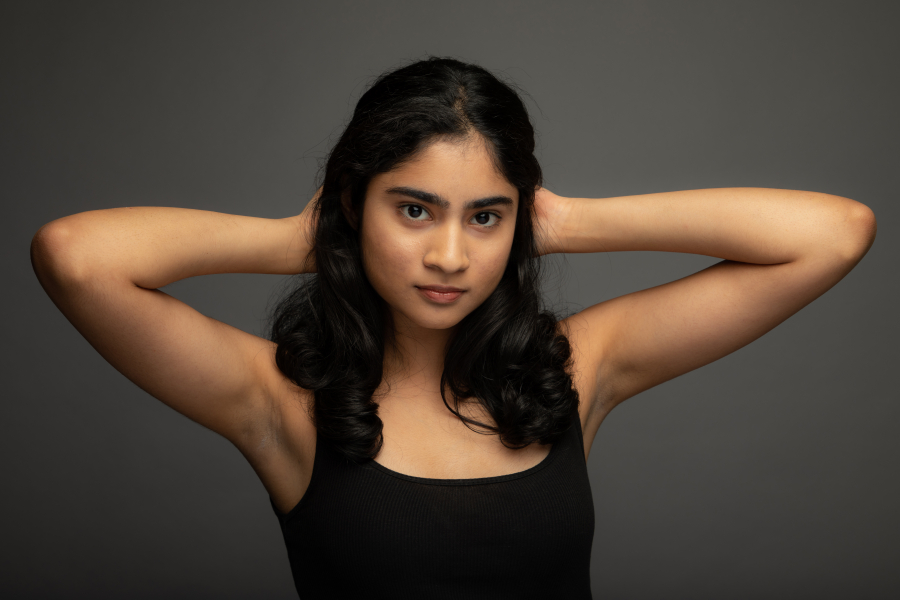How to Build A Modeling Portfolio Featured
Written by Sukla ChinnappaThe foremost important thing a model must know is how to build a modelling portfolio. Having a good modelling portfolio is the first step on the path to being a model, and it helps in acquiring an agency representation as well. There are many ways to build your portfolio, however, the way you choose to go about it, you must bear in mind that your modelling portfolio is a vital accessory which can make or break modelling opportunities.
REMEMBER: Your portfolio is your first impression, and your best chance to book modelling work.
So how does one go about building a modelling portfolio?
One can start off by having a set shoots with a reliable & well-known photographer in the industry or build it over a period of time by bartering your time/modelling services with lesser-known photographers over time. But importantly before you begin taking photos for your lookbook, you will first need to determine
- Which type(s) of modelling will your look allow you to get into and would you want to get into that
- Be honest and realistic with yourself and have realistic Goals & Expectations
Having clarity on this will save you tons of wasted time and effort in the future.
Some of the types of Modelling that you can pursue are:
- FASHION MODEL: This is undoubtedly the most exclusive and most difficult of all categories. As a whole, a fashion model MUST be tall, young, and thin. In addition, there are fashion model “size requirements”, and it’s a rarity to find any exceptions made in terms of that.
- Female Fashion Models:
- Height Requirement: 5’8” and above (exceptions within one inch or two. Anything beyond that is extremely unlikely to be considered.)
- Measurement Requirement: 34-24-34. (Exceptions within one inch, and or two. Anything beyond that is extremely unlikely to be considered.)
- Age: 16 to 20s.
- Size : 0-4.
- Weight: 45-50 kg (directly proportional to height)
- Male Fashion Model Requirement
- Height: 5’11” and above
- Weight: 60-70 kg, directly proportional to height.
- Measurement: Waist between 29” and 32”.
- Age: 18 and above
- Female Fashion Models:
- EDITORIAL FASHION MODEL: Models for editorial are those that you find on pages of magazines like Elle, Vogue, Femina, etc. One must fit the modelling requirements for a “Fashion Model” in order to be considered for this category
- FASHION CATALOGUE MODEL: Fashion Catalogue models are the ones you see featured in the clothing catalogues. One would need to fit into a variety of outfits and still has a lot of requirements, but in general, it is significantly less than what is required for Fashion
- RUNWAY MODEL: As the name suggests Models that walk the catwalk/runway. As Runway models are hired to use their bodies as a mechanism to display the fashion garments they MUST be tall, have measurements that fit the standard clothing sizes, and know-how to walk the runway
- COMMERCIAL MODEL: Commercial models usually work different jobs, including but not limited to print advertisements, television shows, magazines, catalogues, trade shows etc. There are no specific requirements to be a commercial model. This is a good alternative to being a fashion model when you do not fit the requirements for mainstream fashion modelling.
- PRINT MODEL: Models who you can find on publications, such as magazines, print advertisements, billboards, calendars, posters, campaigns, booklets, flyers, banners. Print models must have an attractive face, good skin, a nice body, and a pretty smile.
- GLAMOUR MODEL: Glamour modelling is more focused on a model’s appeal, beauty and body than it does on anything else. Glamour Models are considered very pretty and are able to book work simply by being attractive.
- PROMO / PROMOTIONAL MODEL
- Apart from these mainstream categories, some may also find some niche modelling jobs as
- Petite Models
- Fitness Model
- Parts Model
- Plus-Size Model
- Art Model
- Social Influencer: Another big category that has opened up with the advent of Social media platforms like Instagram are Social Media Influencers who are paid to feature brands, places, products or services on their social media pages. This is one category where your ability to interact with a wide audience and keep them engaged and a keen understanding of the latest trends on social media plays a big role
Once you are clear and have a fair idea on what you want to pursue the next step would be to find a photographer. It is of little difference if you use multiple photographers or just one versatile in multiple styles. What really matters is the quality of their work.
Note: generally, the following applies to unsigned models. Models signed to a modelling agency are usually provided with an agency-approved photographer to build one specific to their requirements.
When you are looking for a photographer, it would be wise to base your selection on
- Quality of their work
- how many years have they been shooting
- their resume and credits
- their policies
- How many fully processed photos will you be receiving
- Rates
- Will you be receiving high-resolution files ready for print/web use (someone giving instructions on where and how to get it printed would be a plus. (As different printers and print materials can give varying results)
- Do you get a set of prints (try to get at least one are, and if they will print the photos for you (if so, are they going to charge you?), or if they plan to give you the photo files and let you handle the printing on your own.
You can further filter down your selection by
- Getting references from their former clients.
- Do ask them to share references of models that they have worked within the past.
- You may contact the references to know about the experience they had.
Your next step is to work with the photographer on of the types of photos you need to have a well-rounded portfolio that demonstrates the types of modelling you are best suited for. Communicate your intentions (goals) to your photographer, ask for his input as well as suggestions, and agree upon a few things such as:
- The wardrobe items you need in order to achieve the particular look/concept
- What colours or patterns that work best and ones you should avoid if any?
- The poses best-suited for the shots you are trying to get
- The hair and makeup looks that will work best with each look/concept on you for these photos
- You can also employ the services of a stylist and make every effort to ensure a good vision of the objectives/results much ahead of the shoot date.
Unless you are fairly good with your hair & makeup you would be better off hiring a professional hair and makeup artist. Before you think of optimising your cost remember
- You will have a better look
- You will also have more time to try different variations (getting photographed)
- You may even end up saving on time spent.
Note: it’s advisable to hire an MUA the photographer has worked with earlier (do ask for recommendations from your photographer). It is definitely a plus if you select your MUAH with the due diligence you took to select your photographer
PREPARATION: REST – HYDRATE – Plan & Pack Leisurely (Start a week early if you can)
- Do get some extra sleep (especially on the day before – extra if you have an early shoot)
- Start your packing your wardrobe well in advance wardrobe with options previously discussed, and do include a few extra options (just in case).
Importantly carry some great attitude! It’s a photoshoot time.
Selecting the images: Remember it is not about what you like, it's about what prospective clients are looking for before they hire you
Rule of thumb:
- Make sure you focus on picking variety, to showcase your versatility
- Avoid multiple shots of the same kind in your portfolio
- Make sure to have at least one smiling and one non-smiling headshot, a three-fourths length shot, and of course a full body shot. Once you are done with these you have a bit more freedom on what else you’d like to include, as long as the photos fit within your chosen ‘genre(s)’ of modelling.
- Keep in mind that your photographer’s input is very valuable, as he/she is better at judging quality shots (and one's clients/fellow photographers want to look at).
- keep in mind you really want to be picking the absolute BEST of the BEST here.
- In simple words select photos that are high-quality, attention-grabbing, and stop people in their tracks. Remember, this is your BIG chance to make a great first impression!
Prints: Finally, keep in mind that your photos should be at least 8×10” prints in pristine condition. These photos should be placed inside a high-quality portfolio book. Every detail counts- don’t start cutting corners now, because this is the modelling portfolio that your clients are going to see. Do take advice from your photographer regarding the material to print on etc. Colour Technology is very complex and go by the book.
Finally, pat yourself on the back. you now know how to build a modelling portfolio, are now ready to dive headfirst into the world of modelling.
Do spend some time looking into what Artriva has to offer in Creating your Modelling Portfolio.
For a limited time, we are offering a discount for your Intro Video like this one
Lucky readers do have a chance for a free photoshoot !! Details here
Want to know more, do read up on this article on building a Modelling Portfolio
Please leave us a comment here or our discussion forum and let us know of any further questions regarding how to build a modelling portfolio.
If this article was useful to you, please like and share!
Latest from Sukla Chinnappa
- Capturing Kids Naturally: A Photographer’s Guide to Fun, Stress-Free Photoshoots for Ages 1–7
- Kantara: Chapter 1, Nature, Dharma, and the Forgotten Balance
- Understanding Pricing Photography Services
- Quick guide for getting noticed on Matrimonial Websites & Dating Apps
- Quality E-Commerce Photography at Affordable Prices
Image Gallery
-
 Malaika
Malaika
Malaika
Malaika
-

-
 Malaika Portrait
Malaika Portrait
Malaika Portrait
Malaika Portrait
-
 Malaika Black & White Portrait
Malaika Black & White Portrait
Malaika Black & White Portrait
Malaika Black & White Portrait
-
 Malaika Portrait with hair flying
Malaika Portrait with hair flying
Malaika Portrait with hair flying
Malaika Portrait with hair flying
-

-

-

-

-

-

-
 Actress Priyanka
Actress Priyanka
Actress Priyanka
Actress Priyanka
-
 Kannada Actress Priyanka
Kannada Actress Priyanka
Kannada Actress Priyanka
Kannada Actress Priyanka
-
 Priyanka Portrait
Priyanka Portrait
Priyanka Portrait
Priyanka Portrait
-
 Priyanka Arora
Priyanka Arora
Priyanka Arora
Priyanka Arora
-
 Actress Priyanka Arora
Actress Priyanka Arora
Actress Priyanka Arora
Actress Priyanka Arora
-
 Model Priyanka Posing
Model Priyanka Posing
Model Priyanka Posing
Model Priyanka Posing
https://artriva.com/blog/item/17-how-to-build-a-modeling-portfolio#sigProIdf77eba42bb
























